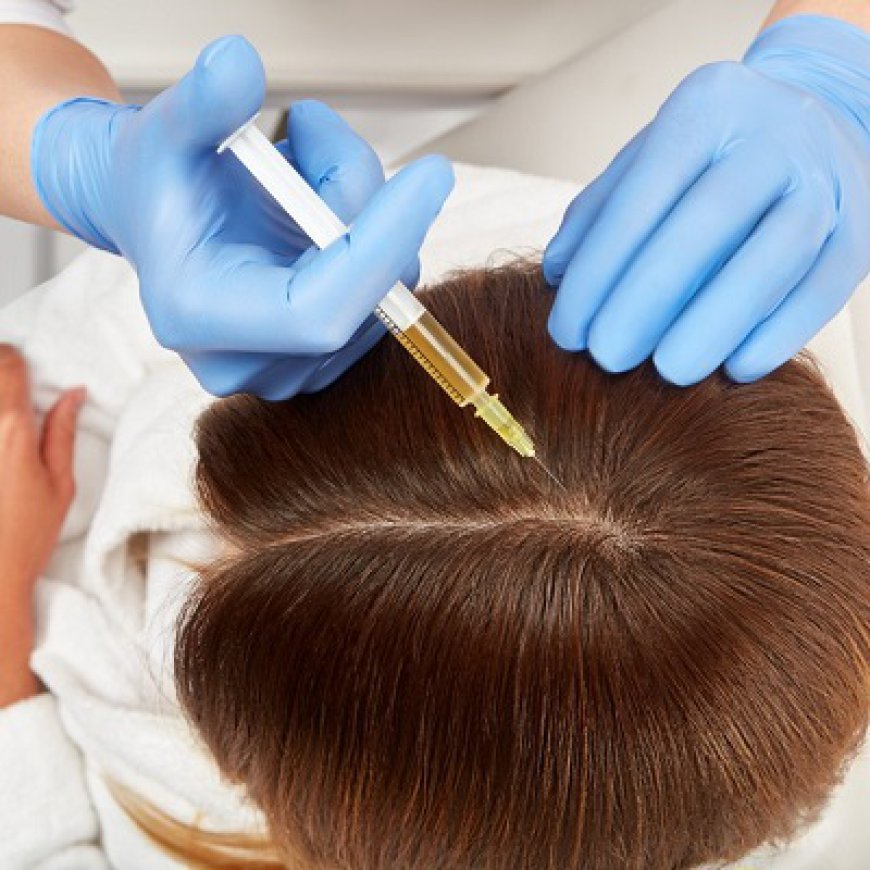an PRP Increase Hair Thickness?
Revitalize your hair with PRP therapy! This innovative treatment stimulates growth using your own platelets for thicker, healthier hair.

Hair thinning and loss can significantly impact self-esteem and confidence. As more people seek effective solutions to combat these issues, Platelet-Rich Plasma (PRP) therapy has emerged as a promising treatment. This blog will explore how PRP works, its potential to increase hair thickness, and what you can expect from the treatment process.
What is PRP Therapy?
PRP therapy in Islamabad is a regenerative treatment that harnesses the body’s own healing properties. The process begins with a simple blood draw, from which the blood is processed in a centrifuge to separate the platelets from the other components. These platelets are rich in growth factors—proteins that play a vital role in tissue repair and regeneration.
Once the platelet-rich plasma is obtained, it is injected into the scalp in areas experiencing thinning or hair loss. This localized injection of growth factors aims to stimulate the hair follicles, promote new hair growth, and potentially increase the thickness of existing hair.
Mechanisms Behind Hair Thickness Increase:
-
Follicular Stimulation: The primary mechanism through which PRP increases hair thickness is by stimulating dormant hair follicles. When injected into the scalp, the growth factors in PRP encourage these follicles to enter the anagen (growth) phase of the hair cycle. This can lead to new hair growth and an increase in hair density over time.
-
Enhanced Blood Circulation: PRP therapy improves blood flow to the scalp. Increased circulation ensures that hair follicles receive essential nutrients and oxygen, which are vital for healthy hair growth. A well-nourished follicle is more likely to produce thicker, stronger hair strands.
-
Strengthening Existing Hair: In addition to stimulating new growth, PRP can also strengthen existing hair. By reinforcing the hair follicles, the therapy can help reduce hair shedding and breakage, leading to thicker hair overall.
-
Anti-Inflammatory Properties: Scalp inflammation can hinder hair growth and contribute to hair thinning. PRP has anti-inflammatory effects that can help soothe the scalp, creating a healthier environment for hair growth.
Evidence Supporting PRP’s Effectiveness:
Numerous studies have investigated the efficacy of PRP therapy for hair restoration. Research shows that patients who undergo PRP treatment often experience significant improvements in hair density and thickness. For instance, a study published in the Journal of Cutaneous and Aesthetic Surgery found that participants reported a noticeable increase in hair density after a series of PRP treatments.
While individual results can vary based on factors like the underlying cause of hair loss and the patient’s response to treatment, many find that a consistent treatment regimen yields the best outcomes. Most practitioners recommend a series of sessions—typically three to four treatments spaced four to six weeks apart—to achieve optimal results.
What to Expect During the Treatment:
-
Consultation: Your journey begins with a consultation, where a qualified practitioner evaluates your hair loss condition and discusses your medical history. This helps determine whether PRP therapy is a suitable option for you.
-
The Procedure: The actual PRP treatment is relatively quick, usually lasting about 30 to 60 minutes. After drawing your blood, the practitioner will process it to extract the PRP. They will then inject this concentrated plasma into the targeted areas of your scalp using fine needles. Many patients report only mild discomfort during the injections.
-
Post-Treatment Care: After the procedure, it’s common to experience slight redness or swelling at the injection sites, but these effects typically subside quickly. You can return to your normal activities almost immediately, though it’s advisable to avoid strenuous exercise and direct sun exposure for a short period.
-
Follow-Up Treatments: To maintain results, follow-up sessions are often necessary. A regular maintenance plan may include additional treatments every six to twelve months, depending on individual needs.
Conclusion:
In summary, PRP therapy offers a promising solution for those looking to increase hair thickness and improve overall hair health. By stimulating hair follicles, enhancing blood flow, and reducing inflammation, PRP creates an optimal environment for hair growth. While results can vary, many individuals report positive changes after undergoing a series of treatments.
If you’re considering PRP therapy for hair loss, consult with a qualified professional to discuss your specific situation and develop a tailored treatment plan. With the right approach, PRP therapy can be a valuable tool in your journey toward thicker, healthier hair.
For more information visit Dynamic Clinic PK
